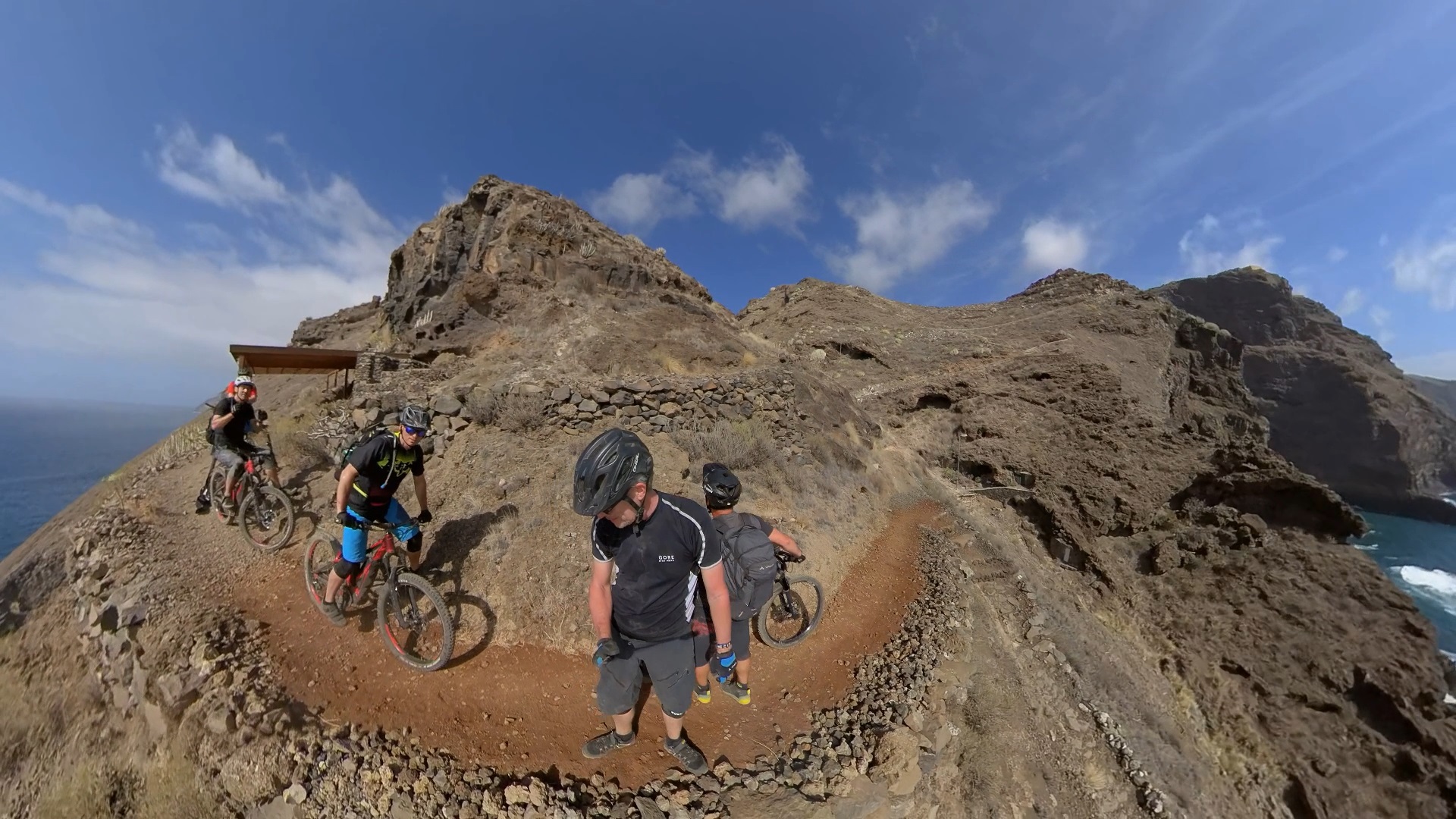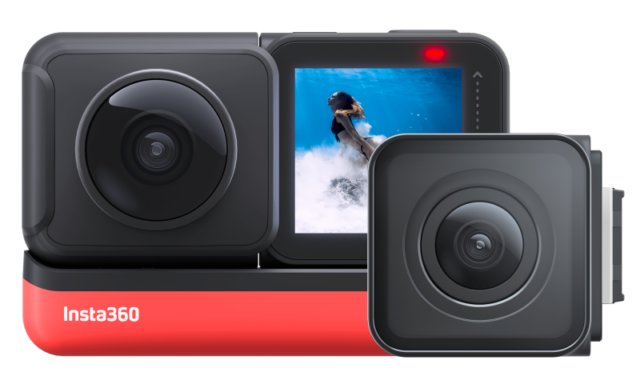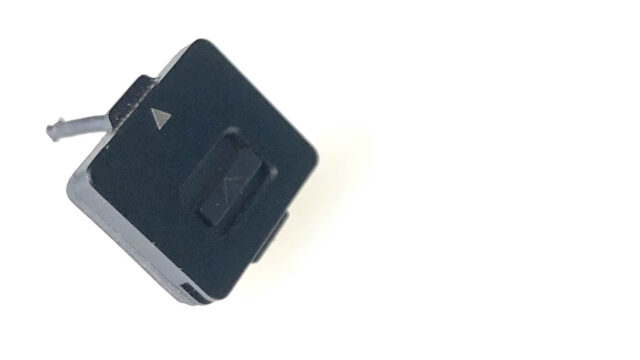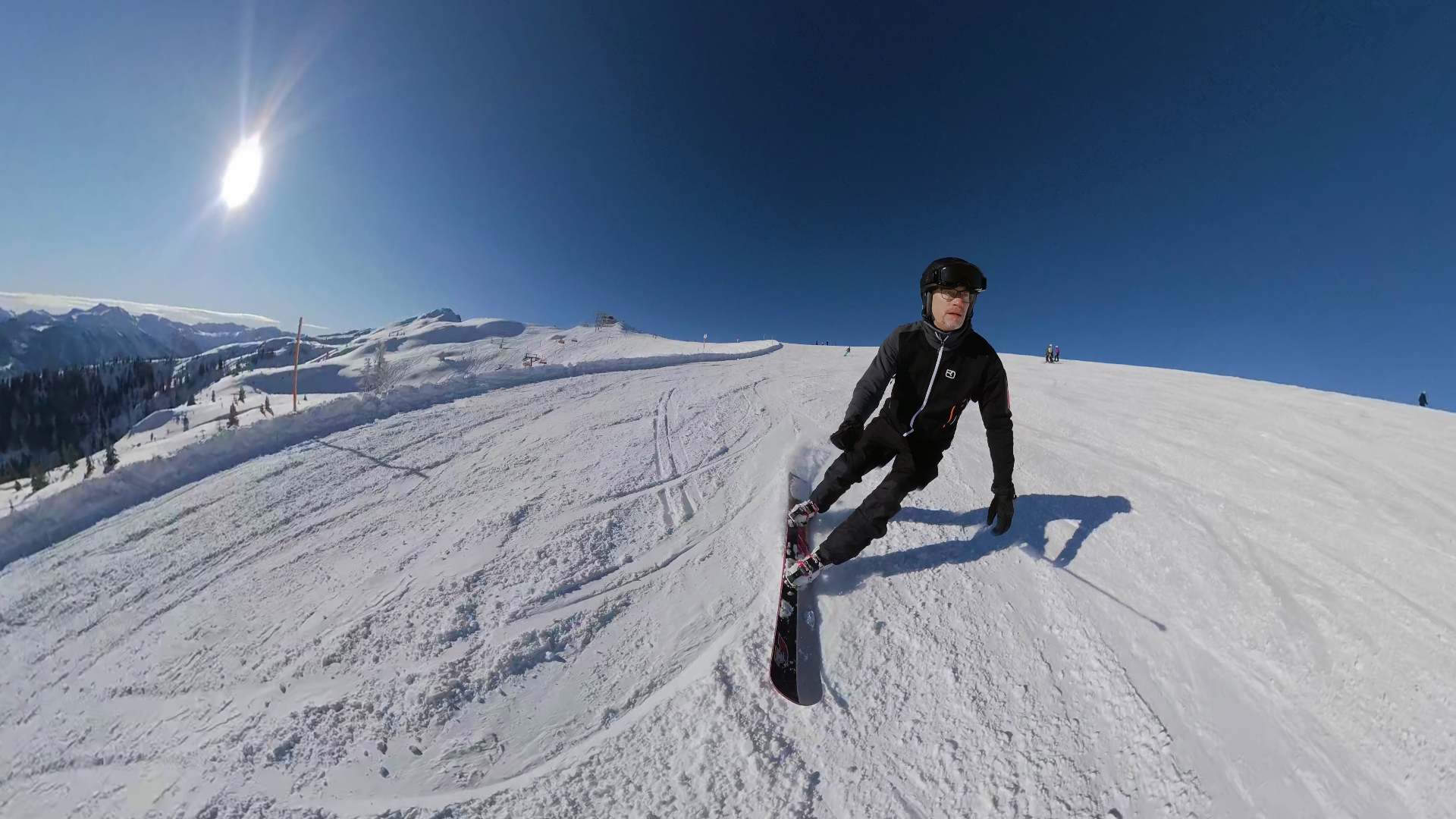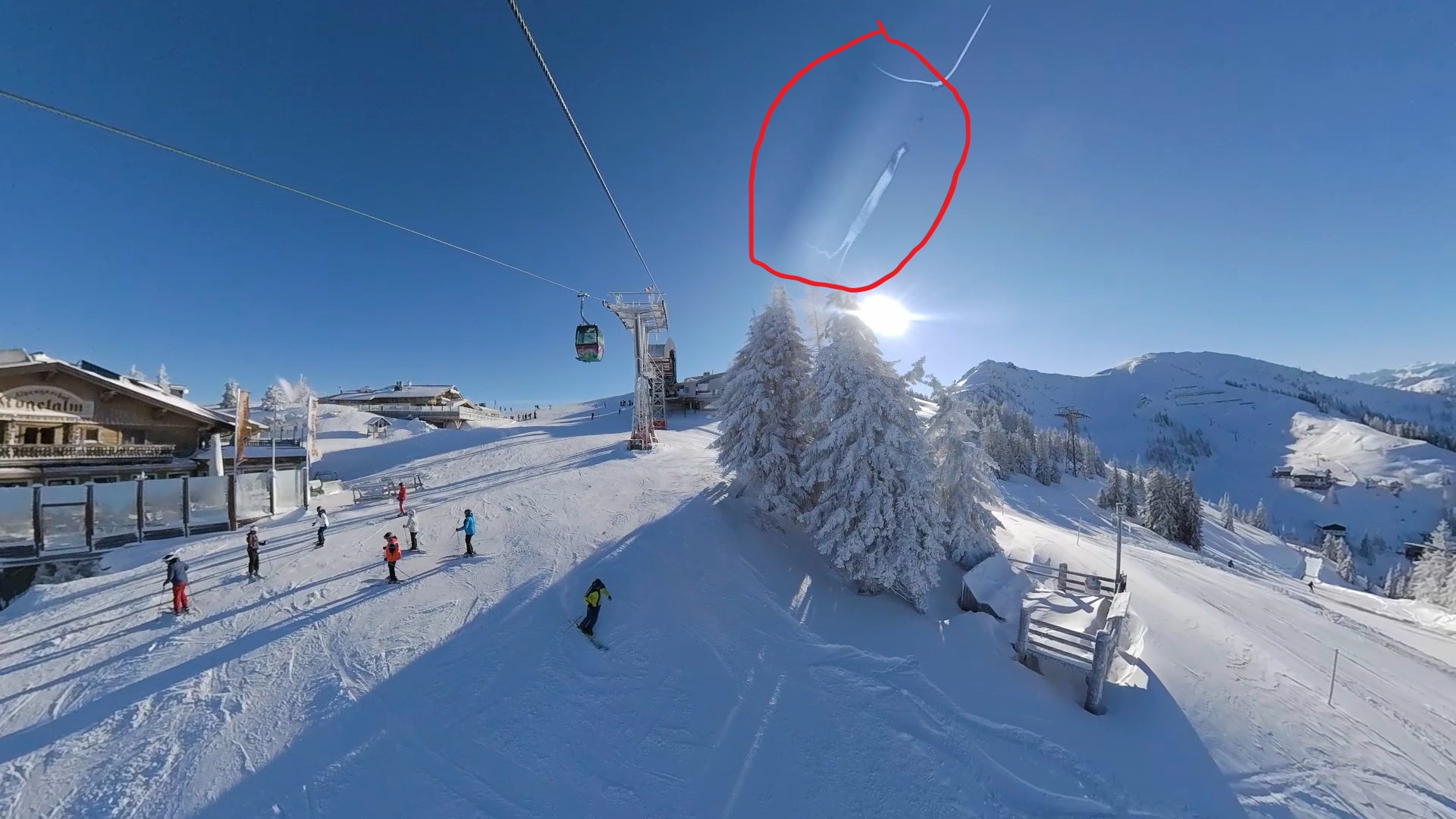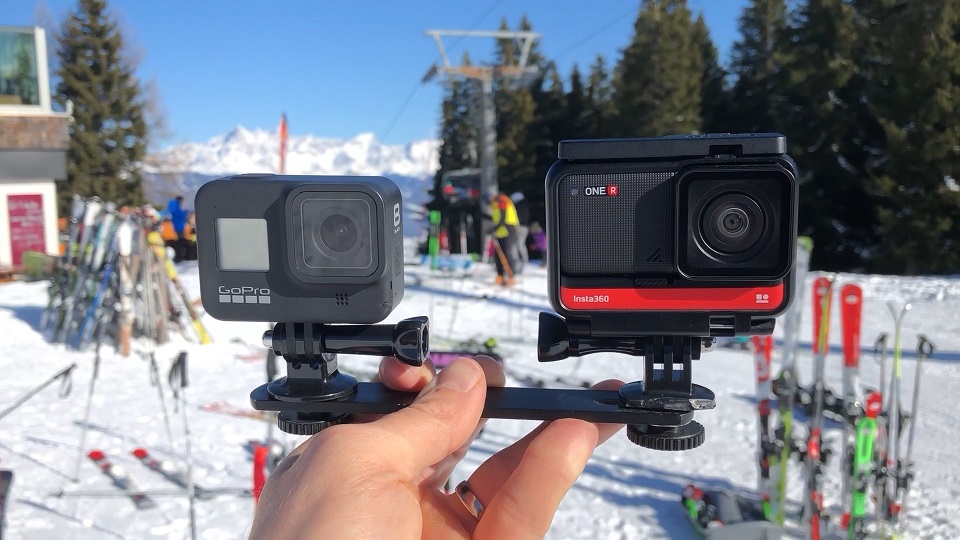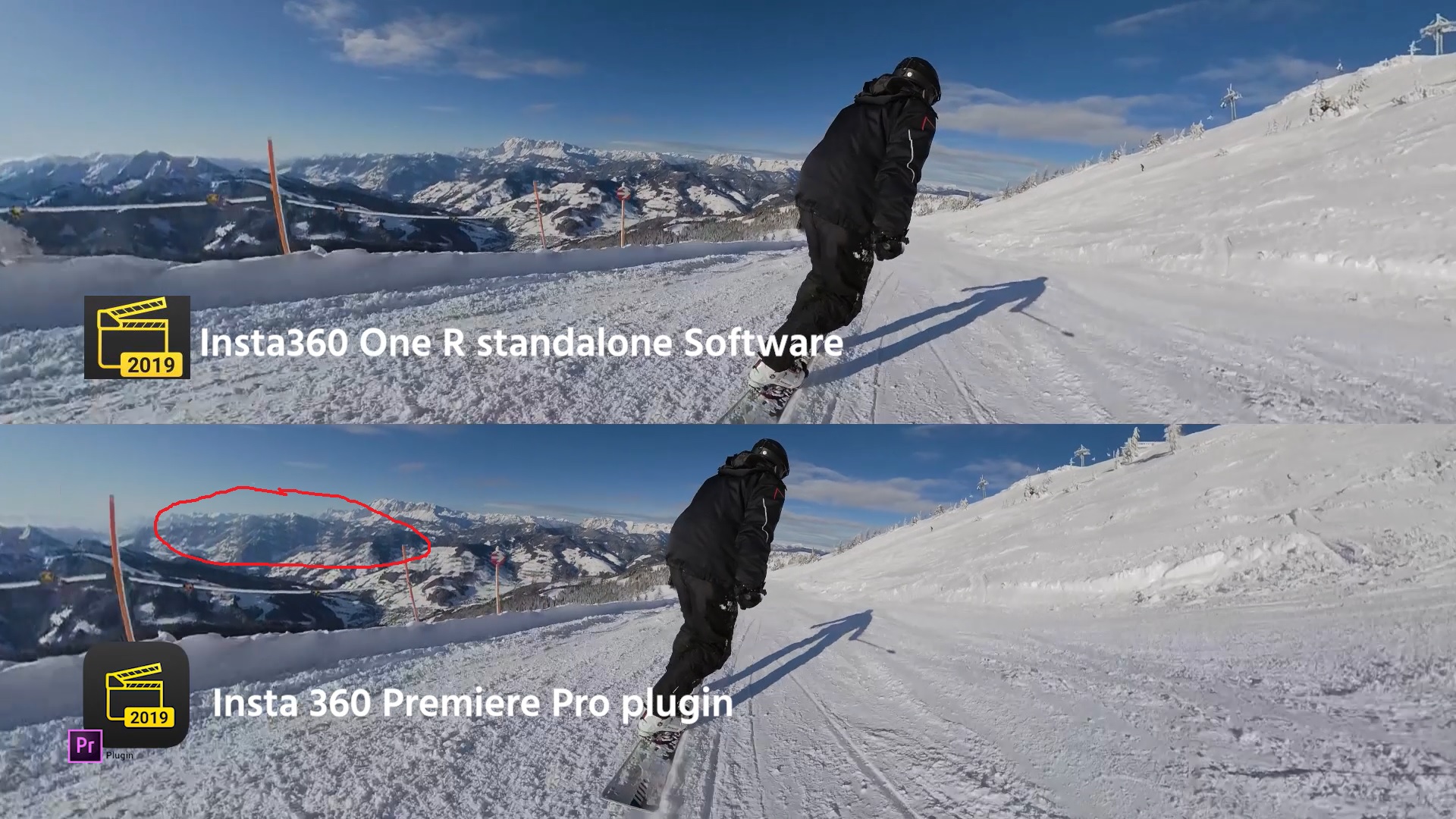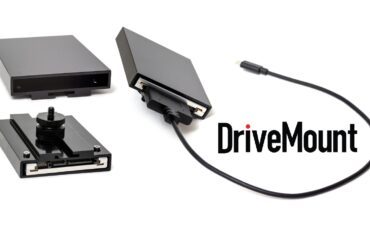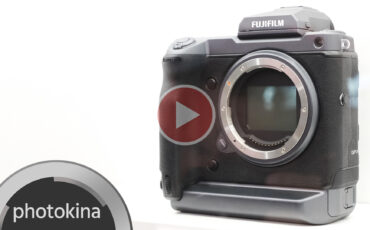Insta360 One R Twin Edition vs. GoPro HERO8 Review – The Future Of Action Cams?
Music Courtesy of MusicVine.com Get 25% off your next music license with code C5D25 (valid for one use per customer)
So far, 360° cameras have not really caught my interest. I thought of them mainly as a nice gimmick not worth spending too much time on. When my colleague Nino asked me to have a detailed look at the new Insta360 ONE R Twin Edition I gave it a shot and was pleasantly surprised … is this the future of action cams?
Over the last years, I have used a lot of action cams, starting with the GoPro Hero 2 back in 2011, as well as some of the cheaper Chinese knock off’s but including also serious contenders like DJI. What I love about these cams is the fact that they are super small, can be mounted almost anywhere and provide a decent image quality.
More recently all the cams started to offer higher framerates and very good image stabilization – 4K at 60 frames per second, FullHD at 240 fps and a good color science – perfect for outdoor sports like skiing and mountain biking!
Now there is, of course, the issue with traditional action cams that you decide for a specific framing of your shot while mounting the cam in a certain position. If you want to cut your footage you need at least two of these cams providing different point of views.
Filmmaking for Photographers
With 360° cameras, this game changes …
360° Image Acquisition
The beauty of shooting footage with a 360° cam is the fact that you choose your framing in post. Need the forward-facing shot? Fine. Sideways? Rear-facing? Up? Down? You get the point…
This may sound super obvious but was not on my radar so far, and I can also speak for many of my friends at least.
Combine that with good image stabilization and you have a very small “acquire it all” device once you hit the record button.
Meet the Insta360 ONE R Twin Edition
For a detailed rundown of the specs and features of the new Insta360 ONE R Twin Edition please have a look at my colleague Nino’s post here.
I will concentrate on using this modular camera system while skiing and on the mountain bike. It took a while to get this review out but I really wanted to use this camera for an extended period of time (2 months) to get acquainted with all aspects including the various tools for post-production.
First things first, I have to applaud Insta360 for coming up with such an innovative, modular design. The Twin Edition basically consists of a dual-lens 360° camera module, a 4K wide-angle action cam module and a recorder unit with a little LCD screen that can be mounted forward or rearward facing. Plus the battery (the red part in the image above).
Build Quality of the Insta360 ONE R Twin Edition
All the parts feel very well made, the build quality is solid and it showed – I accidentally crashed the camera two times into rocky ground (firstly because a mount broke at full speed over rugged terrain on my mountain bike, and secondly I crashed as a whole … have a look at the video). Surprisingly the dual-lens module didn’t show scratches. Well done Insta!
One little thing needs a mention though, the SD card and USB C slot are protected by a little door on the right side – see picture below. This door is very fiddly to close, you’re never sure if it is locked into position and thus there is a risk that you lose it – which happened to me. A while later luckily I happened to find it again.
Image Quality of the Insta360 ONE R Twin Edition
Now coming from the action cam world with 4K image acquisition the big question was about image quality and stabilization. The 360° dual leans module only allows a 1920×1080 capture in post from a 360° 5.7K acquisition at up to 30fps.
Well, in my personal opinion 1920×1080 is more than enough for moving/action shots. Only in a static landscape shot, you will see a difference to 4K. And for this scenario, you have the 4K wide-angle camera module.
As you can see from the FullHD video frame grab above, details are captured very well in the center of the image. At the edges distortion is high and details suffer, depending also on the “distance” that you set in post – the more distance, the more spherical the image becomes and the more distortion/loss of detail is happening at the edges of the frame.
Colors are really good, auto exposure and white balance works very well and the images are not too noisy (more on that in the postproduction section below). Also, the image stabilization, called “Flowstate” works very well.
My preference was to shoot in the log mode – here, the colors are not so oversaturated, and it is less contrasty which preserves a bit more highlight/shadow information.
Stitching is an issue, however – throughout the video footage you will notice where the images of the front and rear-facing cameras are stitched together, see a frame grab from the opening scene in the video below. I understand this is a difficult task, especially with electronic image stabilization activated – nevertheless I hope this will / can be improved in future firmware updates.
Audio quality is very bad, unfortunately. Even without any movement or wind, the quality is subpar, and once you start to have wind the audio is gone. That’s why there is almost no audio in the footage.
I shot the skiing scenes with firmware 1.0.12, the mountain bike scenes 3 weeks later with firmware version 1.0.20 and at the time of writing version 1.0.24 is out (a nightmare for any camera reviewer ;-)). However, from version 1.0.12 to 1.0.20 the stitching issues did not improve.
A big part of the image quality of any cam is the codec. The Insta360 ONE R offers H265 codecs for both the 360° dual-lens module and the 4K wide-angle module, on their homepage the specs for the SD card are listing a UHS-I V30 card. BUT be aware that a UHS-I V30 SDHC card will not record in H265 using the 4K wide-angle module! You have to use an SDXC card to enable H265 recording.
A fact I only found out on the ski-slopes.
Insta360 ONE R Twin Edition Compared To GoPro Hero 8 Black
Of course, I was very interested to see how the 4K wide-angle module would compare to the newest GoPro Hero 8 Black. For this I mounted both cams on a common rail, see the image below:
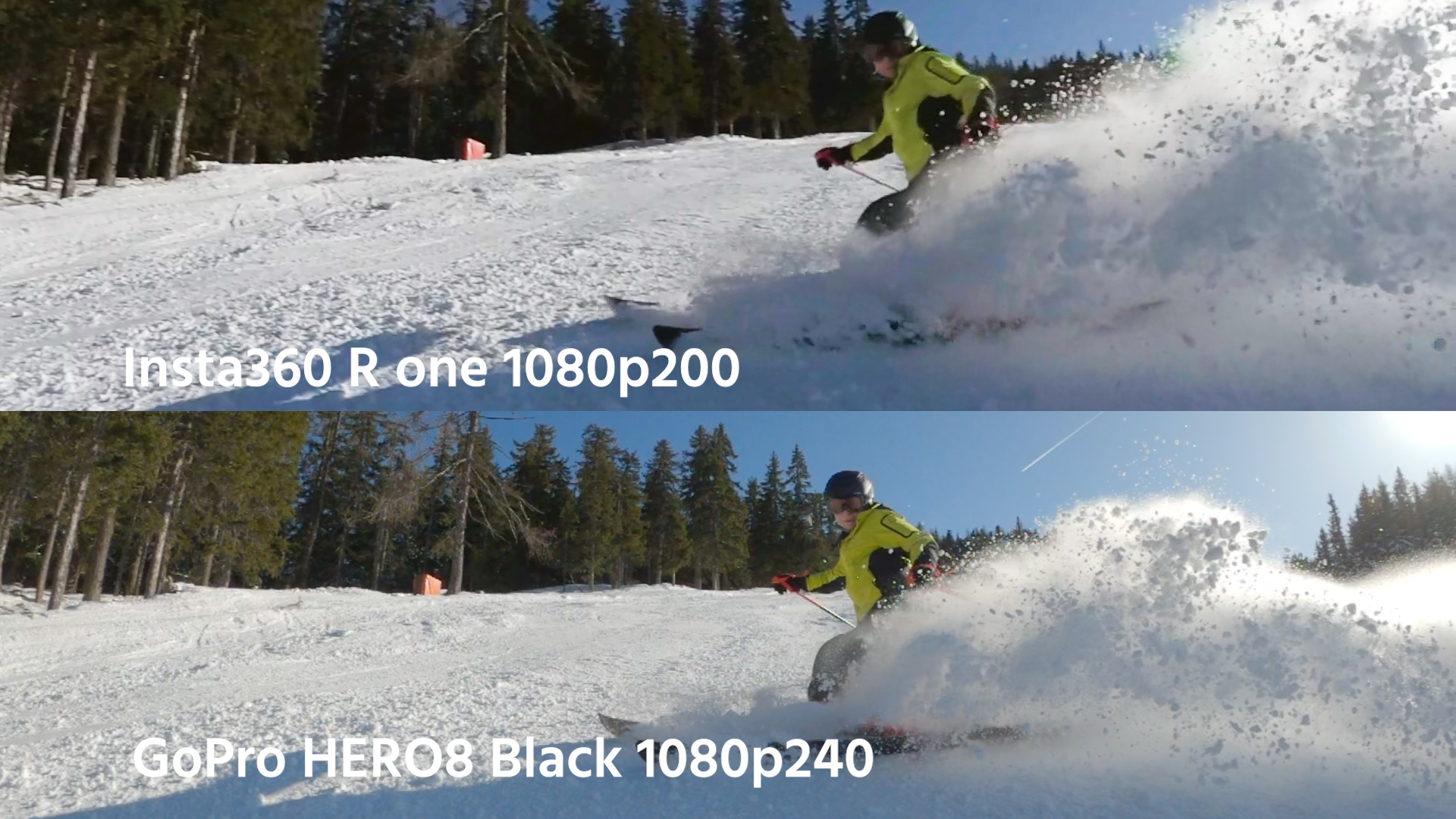
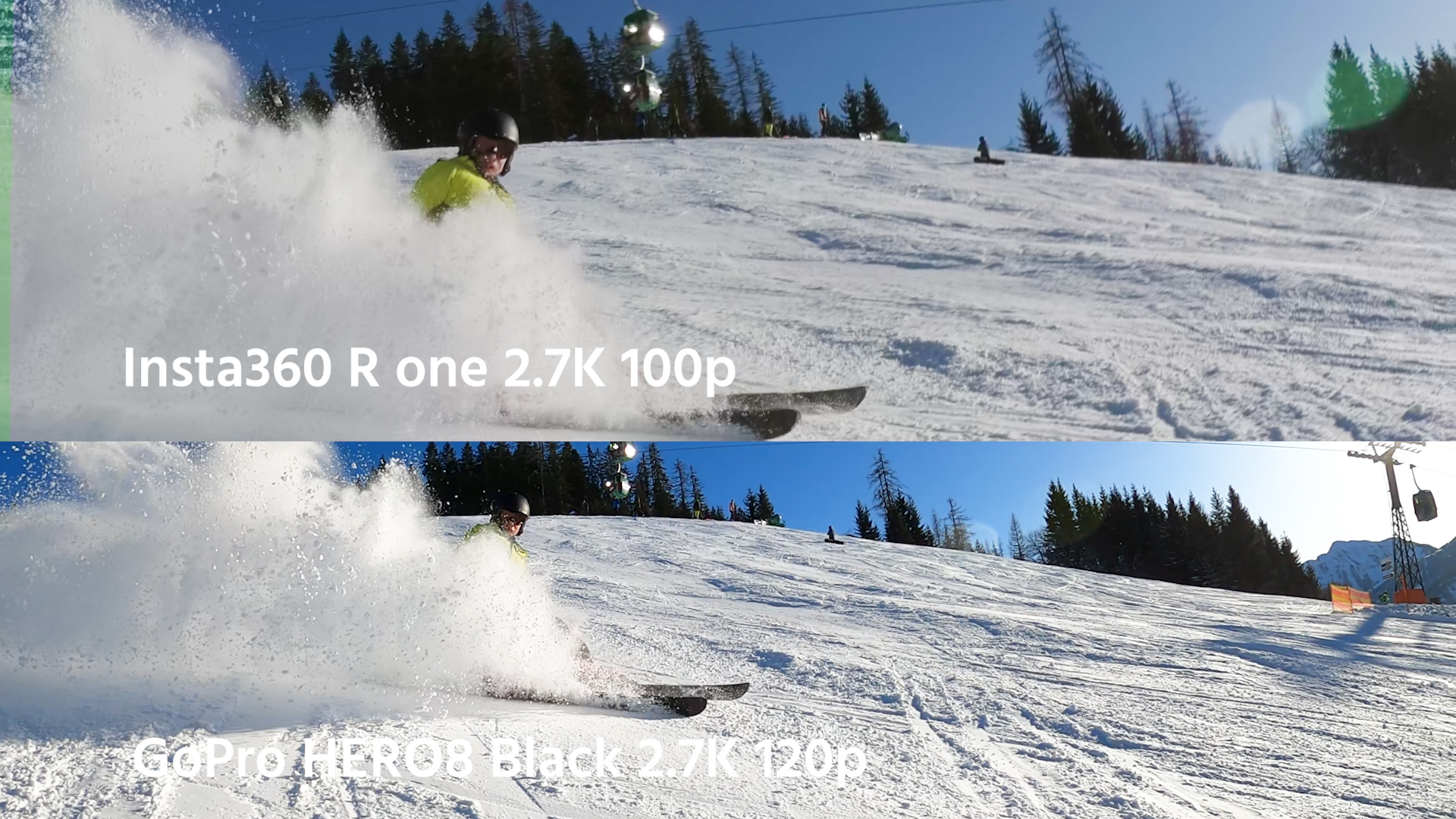
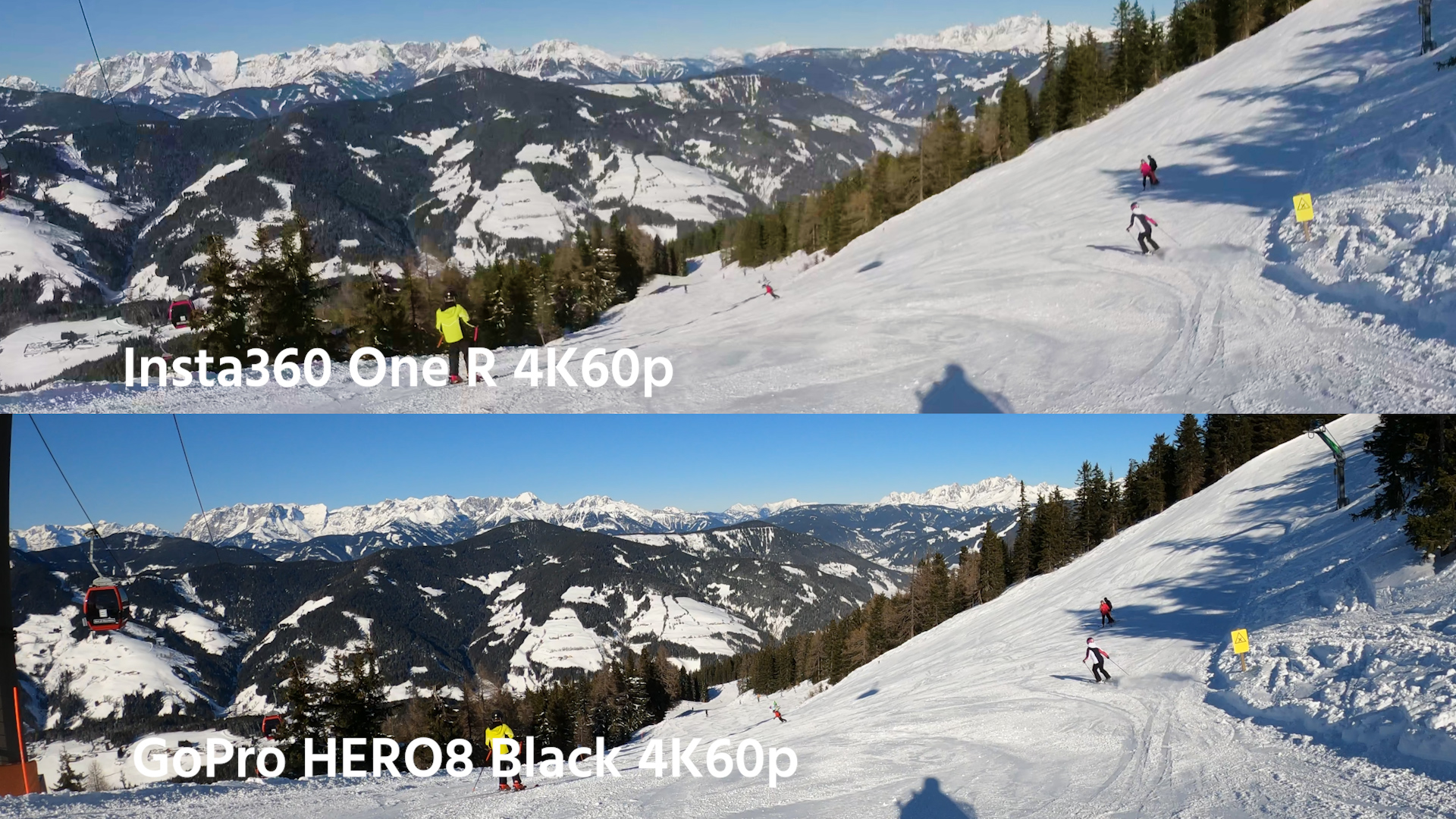
In summary, one can say that the 4K wide-angle module is not as detailed as the GoPro Hero 8 Black, and it has a tighter field of view in all modes. However, partially this has to do with the SD card issue mentioned in the previous paragraph – as mentioned above, the specification says UHS-I V30 cards will work, but the Insta360 refused to record H265 with my SDHC card. Back home I tried the above modes again with an SDXC card and the image improved, nevertheless, the major findings remained – the image of the Insta360 4K wide-angle module is softer, also the data rate in H265 is 30% lower than the GoPro.
Also, the GoPro Hero 8 Black offers higher framerates in 2.7k (120fps) and 1080 (240fps).
Flowstate for the Insta360 and Hypersmooth for the GoPro are on the same, very good level. Audio is almost unuseable on the Insta360, whereas GoPro is constantly improving – even in windy conditions you get some sort of audio that can be used.
Battery Life is exactly the same for both cams – approx. 51 minutes of recorded footage. However, both cams stop after exactly 30mins (the usual limit to avoid tax) and restarting the recording both cams overheated soon after: the GoPro after 34minutes, the Insta360 ONE R after 36 minutes.
Postproduction: Using the Insta360 Standalone Software & the PremierePro Plugin
Insta360 offers four very useful postproduction tools which simplify the workflow dealing with the 360° footage:
- the Insta360 ONE R camera control app – allows controlling the camera via BlueTooth
- the Insta360 Studio standalone software
- a PremierePro Plugin which allows importing the shots directly from the SD Card
- the GoPro FX Reframe plugin for PremierePro
The app is very useful offering a lot of features – camera control, firmware download, etc … The list is long!
I started to edit the 360 footage immediately in PremierePro 2020 with the Insta plugin and GoPro FX reframe, which are super useful tools for camera movements, zooming in and out, removing a bit of the fisheye look, and so on …
Unfortunately, I discovered that the stitching doesn’t work as well as when using the Insta360 Studio standalone software. Also, the images with the Premiere plugin are noisier, and sometimes a faint green line appears in the footage. Have a look at the video, but here is also a screengrab showing the stitching issue:
Summary
There is a lot to like about the Insta360 ONE R Twin Edition, and very little to dislike – I am really fascinated by the new possibilities offered by the 360° camera capture! And, I think your traditional action cam is a thing of the past very soon.
Today there are still issues with stitching and 360 cams do not offer higher framerates (yet). But as soon as those items are addressed, those cameras will become my main action cam devices.
For now, a camera like the Insta360 ONE R Twin Edition offers the best of both worlds for a very reasonable price of 480USD.
I am really curious now to test the new GoPro MAX 360 camera – it offers even 4K footage in postprocessing up to 30fps.
Music courtesy of MusicVine.com – Get 25% off any Pay-Per-Use license with code C5D25 (valid for one use per customer).
What do you think about the Insta360 ONE R? Are you into 360-degree filmmaking or do you see the potential? Let me know in the comments below!



